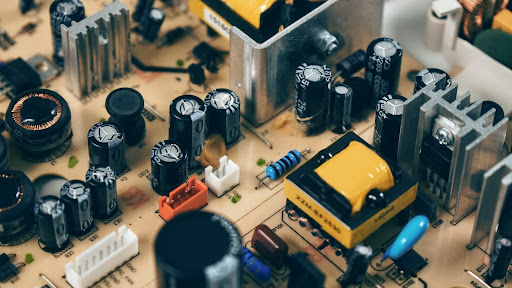Selling used servers is not just about clearing out equipment. The right steps determine whether you capture meaningful value or lose profit through delays and poor planning. Hardware loses value quickly, but strategic sales methods can preserve significant returns. Acting before systems become outdated protects margins and positions assets for higher demand. Bundling equipment, keeping detailed records, and using accurate documentation help justify premium pricing. At the same time, compliance and environmental considerations matter. Secure data handling and certified recycling processes protect your organization while supporting sustainability goals. With deliberate action, server resale becomes both profitable and responsible.
Boost Your Return with Smart Tactics
Your timing and strategy will determine whether you make pennies or dollars when selling IT assets. The condition and specifications matter, but several smart approaches can significantly affect your profits when selling server equipment.
Sell Before Hardware Becomes Outdated
Server value starts dropping the moment it enters your data center. Each month erases about 2-3% of your equipment’s market value. This rapid drop means you could lose up to 36% of potential returns by waiting just one year.
The right timing depends on watching industry changes that affect value. These key factors matter:
- New product launches from major manufacturers
- Component shortages affecting availability
- Seasonal demand changes
- Economic conditions affecting IT spending

A partnership with an ITAD provider who tracks market changes will help you profit from temporary value spikes. Good specialists work fast when your assets’ values peak. This helps you maximize returns without long market exposure.
Offer Bulk Deals or Bundles
Smart bundling creates attractive packages that sell faster than individual parts. You should offer complete server solutions with processors, memory, and storage that meet specific business needs instead of listing components separately.
Many ITAD vendors succeed by pricing individual assets based on make, model, configuration, condition, and age. This detailed approach brings better returns than broad category pricing. Look for buyers who understand the extra value of properly bundled systems.
Upgraded servers need clear revenue sharing arrangements. The fairest way splits upgrade costs between both parties since everyone benefits from the improved value. Stay away from vendors who take all upgrade costs from your share while keeping their portion intact.
Use Documentation to Justify Pricing
Complete documentation gives you an edge during price talks. Network documentation helps prove investments and shows value to stakeholders. This works the same when selling used equipment, detailed records prove your asking price.
Quality ITAD specialists give clear valuations for specific server setups and storage capacities. This approach recognizes your exact hardware’s market value instead of using generic pricing.
Corporate sales that need executive approval benefit from good documentation. Businesses must justify purchases to their leaders. Providing complete maintenance, performance, and specification records helps their approval process and supports your premium pricing.
Stay Compliant and Eco-Friendly
Selling used servers needs more than finding buyers – you must pay attention to compliance and environmental factors. The right handling helps you stay clear of legal issues and supports sustainability goals.
Follow Data Destruction Standards
Data handling mistakes can lead to major security problems. A security firm bought 159 drives from eBay and found that there was recoverable data on 42% of them. Even more concerning, 3 out of 20 drives had personal information. We focused on three types of data sanitization: clear (logical techniques), purge (physical/logical techniques making recovery infeasible), and destroy (rendering media unusable).
To keep your data safe, here are your best options:
- Hard drive degaussing followed by shredding
- Gutmann standard 35-pass overwrite to erase all data
- NAID standard hard drive shredding that destroys data completely
The process needs proper documentation to protect you. Make sure you get certificates of destruction with each drive’s serial and model number listed.
Recycle through Certified Facilities
Your servers have toxic materials like chromium, beryllium, cadmium, mercury, and lead – the USA classifies these as toxic electronic waste. Your recycling partner should have these certifications:
- R2V3 certification for electronics recycling
- ISO 14001 environmental certification
- NAID AAA certification for data destruction
Only 20% of e-waste gets recycled globally, which makes proper disposal vital. Many places have strict rules like WEEE in the European Union and R2 Standard in the US that require proper IT waste disposal.
Support Circular Economy Practices
Circular economy helps get the most value while creating less waste. Google shows how this works – they use a multi-step destruction process for components they can’t resell before sending them to recycling partners. This approach helped them achieve an 86% landfill diversion rate globally for data centers in 2016.
Reusing and refurbishing IT equipment takes much less energy than making new ones, which cuts down on carbon emissions. That’s why selling used servers for fair market value through certified channels helps both sustainability and compliance goals.
Conclusion
Server resale done correctly goes beyond listing hardware. It requires timing, documentation, and careful consideration of market conditions. Selling before depreciation accelerates, offering complete solutions, and maintaining strong records increase confidence and value. Equally important are secure data destruction and certified recycling partners, which protect sensitive information while meeting environmental standards. These measures strengthen trust with buyers and align with wider corporate responsibility objectives. Combining profit with sustainability creates long-term benefits that extend past the immediate transaction. With the right approach, used servers become both a financial asset and part of a responsible technology lifecycle.



